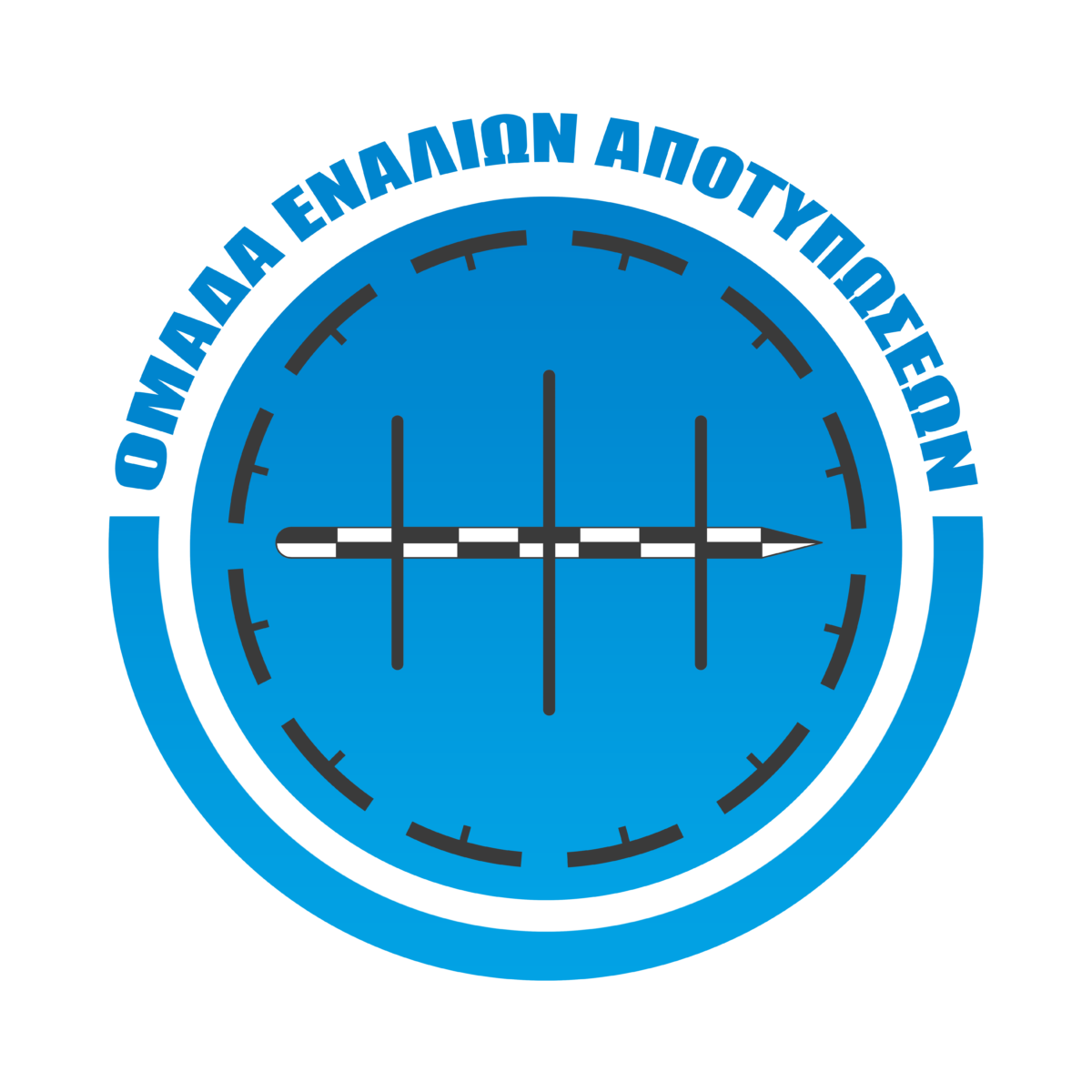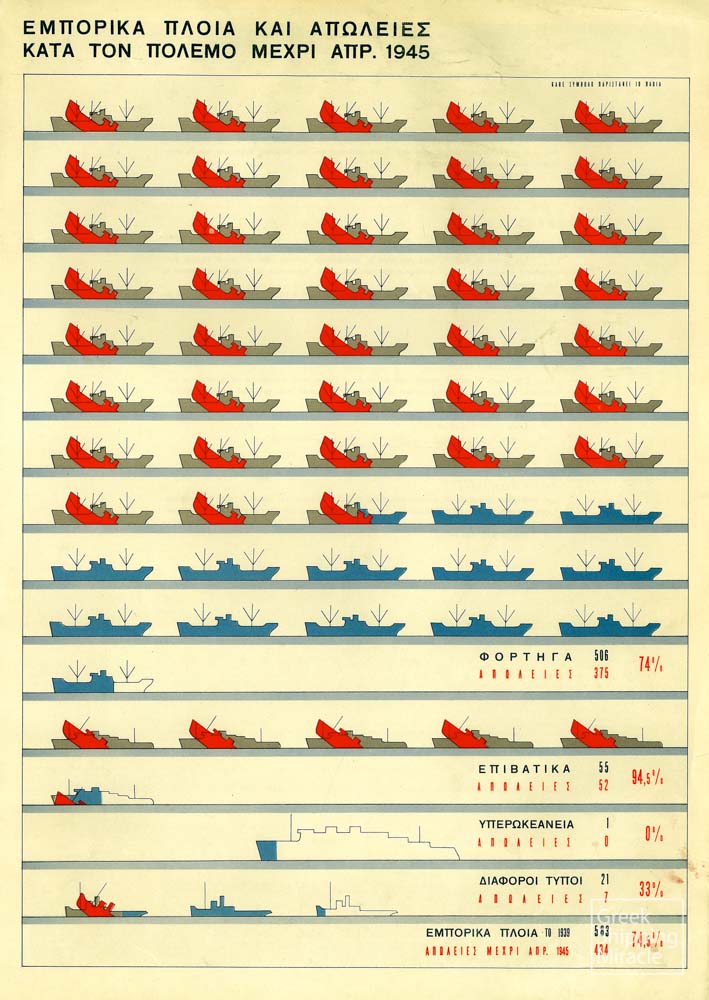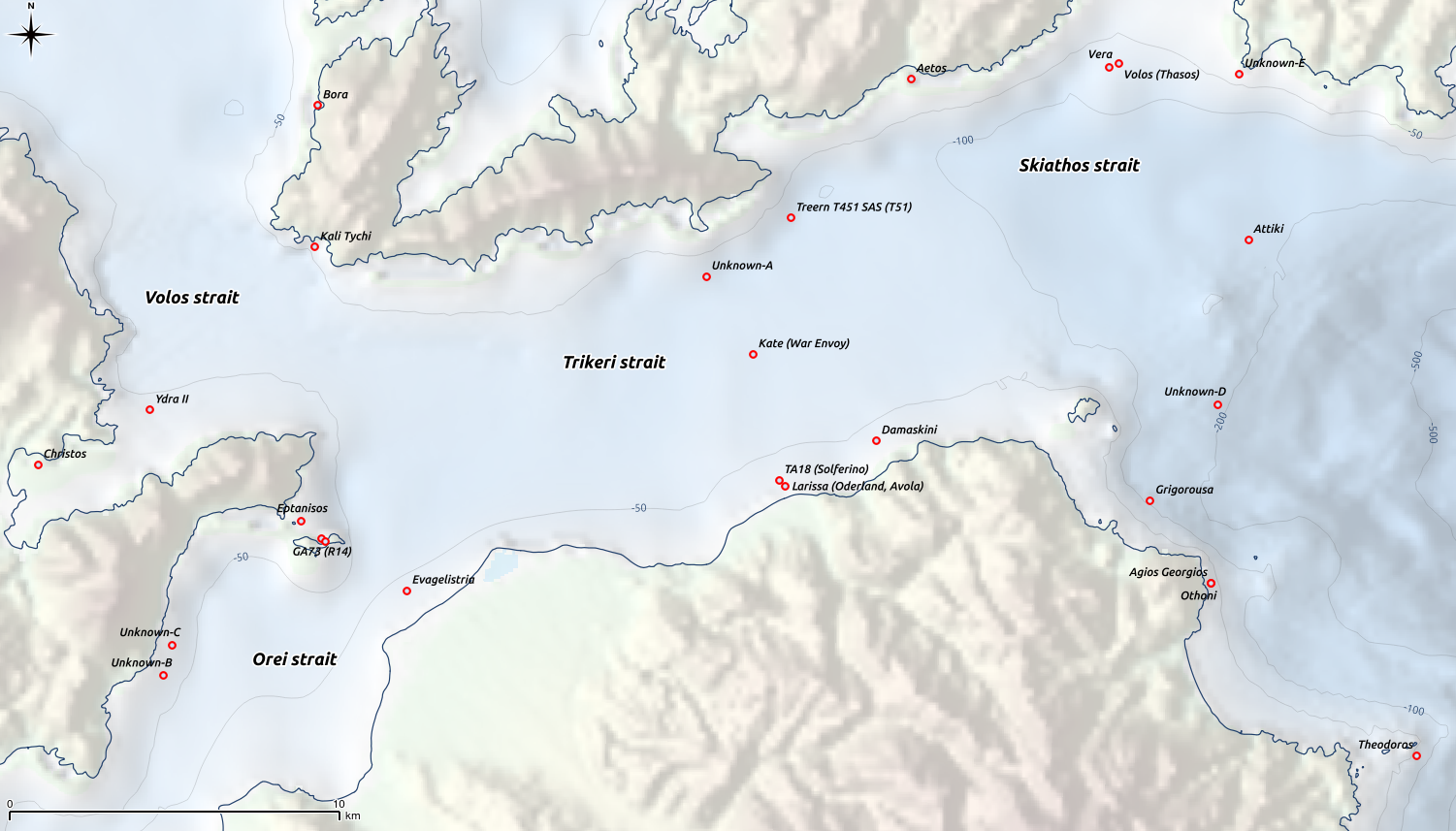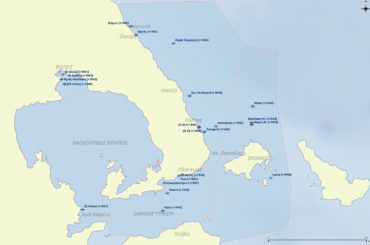Almost 75 years after the end of World War II, the sea continues to keep many of its wartime secrets hidden.
With the proclamation of WWII in September 1939, while our country was still neutral, some 90 Greek steamships were lost. Noteworthy is the fact that out of the nearly 600 vessels in the pre-war Greek merchant fleet, only around 150 remained by war’s end (Greek Shipping Miracle, 2017). The number of smaller vessels lost during that time remains unknown. The main causes of sinking during the war were air raids, submarine action and shipping mines. It is worth noting that mines continued to be a significant cause of maritime loss in the years following the war (Gr. Kartapanis, 2015a).
Throughout the region, the seabed has become the natural preserve of historical memory that is embodied by the wreckage of both small and large ships of the period.
In 2001, the UN Member States agreed on the key principles for the conservation of the Underwater Cultural Heritage (UCH), which are an obligation to safeguard it, maintain its importance, keep it non-commercialized and to share relevant education and information (UNESCO, 2001).
In the first volume of the book, “Wrecks in the Greek Seas” (Chr. Dounis, 2001), the names and particulars of ships which sank from 1900 to 1950 are listed in alphabetical order. Many of them are described by date, circumstances and location of the shipwreck. A cursory search of retired Admiral Dounis’ data by date reveals a total of 1,061 ships sank during the war.

In a list of total ship losses during WWII, approximately 32,000 are recorded (Kurt Hoffmann, 2015). According to the list, Greek ship loss is estimated at around 500, with almost a quarter of them being recorded immediately after the German invasion in April 1941.

According to the same list, the total number of WWII shipwrecks in the Greek seas, along with vessels of other nationalities (mainly British, German and Italian), exceeds 1,000. In the region of the north western Aegean alone, 14 British, 2 Greek and 2 German submarines are included in a list totalling 55 wrecks which are documented in the historical records (this includes the Greek submarine, Katsonis). In the Pagasitikos Gulf and Pelion area, there is data on 70 lost vessels from various causes.
Of these shipwrecks, 25 were caused by two Allied air raids on the port of Volos (mid-October 1944) and 16 by at least 5 submarines (from the summer of 1943 to the summer of 1944), the rest from various other causes. Of these losses, 33 were part of the German Navy, another 33 were under the Greek flag, 3 were French and 1 was Italian.
Shortly after the end of the war, on 28/4/1946, in an article in the Volos newspaper “Tachydromos” entitled “Which ships were lost from the registers of Volos?“, 40 wrecks were reported as having been caused by military operations in the area. The article reads; “The ships lost during the war and occupation which were registered at the Port Authority of Volos, according to a list prepared by the Port Authority, are the following…“. The same article states that; “It should be noted that in addition to the list of ships sank, there are others registered at the Port Authority of Volos, which were sunk elsewhere in Greek seas as a result of war” (Gr. Kartapanis, 2015).
It appears that several of these ships were sunk deliberately to avoid them falling into enemy hands. It is noteworthy that 9 were “caused by British troop dynamite” in April 1941 (shortly after the Germans invaded) and another 17 “were sunk by the Germans on the day of their departure” or by the Allied bombings of the port of Volos in October 1944.
Comparing these figures, it seems that the two lists (i.e. Dounis’ book and the Tachydromos article) actually refer to different ships. One conclusion is that the number of ships sank during WWII in the Pagasitic and Pelion area exceeds 100.
In 2012, a 36-page research publication (based on information from war diaries, books, writings and work on shipwrecks in south Pelion) was published, citing 13 shipwrecks “most of which came as a result of World War II” (D. Galon, 2012). The location of some of these wrecks has been identified. However, many of them were recovered and/or dismantled for scrap in the decade or so following the war.
In an attempt to identify and thematically categorize shipwrecks in the maritime area between southern Pelion and northern Euboea, data from the European Marine Observation and Data Network (EMODnet, 2016) were combined with the available information from Dounis, Kartapanis and Galon for the first time. Location, chronology and causes were all considered, resulting in a total of 26 shipwreck sites in the area (K. Papadimitriou et al, 2018). Sufficient evidence was found for 17 of these, which allowed them to be chronologically distributed to show that 10 (i.e. more than half) relate to the WWII period.
The data suggests that at least 120 ships were sunk in the wider area of Pagasitikos and Pelion during the war. This represents more than 10% of the total number of ships sank in the Greek seas at that time, thus highlighting the importance of this maritime area as a field of study of modern maritime history.
A key question is exactly “where” all these wrecks may be located. Another question is “what” remains today in each of these locations.
References
Greek Shipping Miracle, 2017. The Decentralization of Shipping (1940-1945). URL: http://www.greekshippingmiracle.org/el/history/1940.html (23/06/2018)
Gr. Kartapanis, 2015.a. War-related shipwrecks. URL: http://www.taxydromos.gr/G.Kartapanis/193751-grhgorhs-kartapanhs-nayagia-apo-polemikh-aitia.html (23/06/2018)
UNESCO, 2001. Convention on the Protection of the Underwater Cultural Heritage. URL: http://www.unesco.org/new/en/culture/themes/underwater-cultural-heritage/2001-convention/official-text/ (23/06/2018)
Ch. Dounis. Shipwrecks in the Greek Seas. 1900-1950 (vol. A). Athens: Finatec, 2000 .
Kurt Hoffmann, 2015. Schiffsverluste 01.09.1939-02.09.1945. URL: http://www.schiffswrackliste.de/index.htm (23/06/2018)
Gr. Kartapanis, 2015.b. War shipwrecks in the Volos register. URL: https://www.taxydromos.gr/Γ.Καρταπάνης/192626-grhgorhs-kartapanhs-nayagia-poleμoy-μe-pleoyμena-nhologioy-boloy.html (23/06/2018)
D. Galon, 2012. South Pelion wrecks. URL: http://www.scubadive.gr/forum/showthread.php?t=5828 (23/06/2018)
EMODnet Bathymetry Consortium, 2016. Bathymetry Viewing and Download service. URL: http://portal.emodnet-bathymetry.eu (23/06/2018)
Papadimitriou, K., Sidiropoulos, N., Tsioumas, S., Ktistis, A., Tokmakidis, P., 2018. THEMATIC WRECK-DIVING. A PRELIMINARY STUDY OF UNDERWATER TOURS AT THE AREA OF SOUTHERN PELION AND NORTHERN EVIA, GREECE. In proceedings of BRAU4 Itinerant Congress “The Hidden Cultural Heritage: Under Water, Under Ground and Within Buildings”. Athens/Piraeus, Greece





